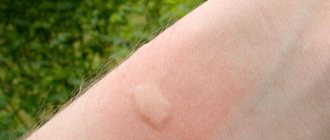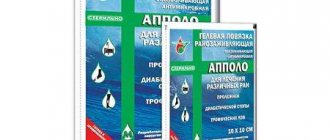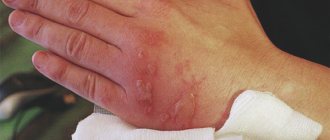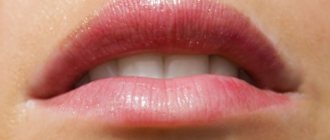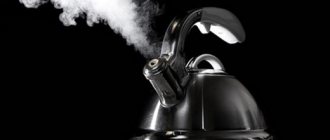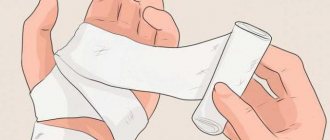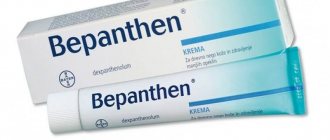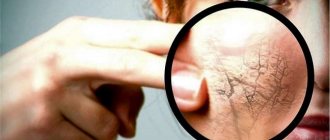The risk of getting a chemical burn exists not only in specific industries, but also in everyday life - repairs, housework, or just an absurd accident. Treatment for this type of injury must be carried out immediately. Of course, all chemicals have their own antidotes, especially if the injury occurs at work, but precious time is spent searching for them.
Signs of a chemical burn are clearly expressed - sharp pain, swelling around the wound, and possibly even death of soft tissue. Painful shock can cause fainting. Chemicals are mostly toxic, and the consequences of their impact on the body are very dangerous.
Immediate first aid will preserve intact skin and partially relieve the primary symptoms. How to act in the absence of antidotes? In simple cases, the disease can be alleviated or completely cured at home. But before that, it is simply necessary to find out the nature and depth of the burn, because further treatment depends on this.
Degree of damage
A chemical burn is serious damage to the skin and soft tissues of the human body. The severity of such an injury is determined by the symptoms.
- First degree: minor injury with virtually no consequences other than a cosmetic skin defect. It affects a small area of the skin and does not penetrate soft tissue. The disorder is limited to the upper epidermis. The most severe manifestations: slight swelling, severe redness. The pain is sharp, but short-lived - it is easily relieved, there is a burning sensation.
- Second degree: the wound is more widespread and quickly goes deeper into the tissue. Severe swelling and redness affects healthy areas of the skin. Blisters filled with serous water form on the wound. The pain is severe and growing.
- The third degree has two categories: “a” and “b”. The symptoms remain exactly the same, aggravated by skin necrosis. In category “a” there are intact areas of the skin and soft tissues. Category “b” is characterized by deep damage - tissue begins to die. Sensitivity disappears, the blisters are larger in size and filled with bloody fluid.
- The fourth degree is unpredictable. The symptoms are the same, necrosis affects tendons and muscles, and can reach bones. It is almost impossible to cure; specialized help is required.
Skin restoration for third degree burns
The third degree of burn is characterized by either a large (up to 20% of the skin) area of damage, or a fairly deep damage to the skin. In this case, the burn affects the epidermis, dermis and even subcutaneous fat. Skin restoration in such cases can last 3 or more months and consists of the following phases:
- cell death;
- rejection of old skin;
- restoration of new cells.
Treatment of such burns occurs mainly in a hospital under the supervision of doctors. During treatment, ointments with antibiotics are used to prevent inflammation in the wound, ointments and creams to accelerate skin regeneration, allowing to speed up the process of its restoration - Panthenol, Spasatel, Levomekol, Liniment Aloe, Solcoseryl and others, vitamin complexes, antibiotics in tablets, if necessary, painkillers .
Classification
Injuries are characterized primarily by the chemical reagent that caused them. A person can be injured both at home and at work, so a number of “culprits” are identified from which this happens most often:
- various acids, the most common are sulfuric and nitric;
- alkalis;
- flammable mixtures (kerosene, gasoline, etc.);
- phosphorus;
- hydroxyl complexes;
- oil (bitumen).
A weak solution of these compounds will easily cause skin burns upon prolonged contact. The effects of all substances negatively affect the human body, in addition, many of them are toxic. The severity of the injury will be equal to the time the connection is exposed to the injury site.
The damaged area is gradually covered with a crust or plaque. A burn with alkali is the most dangerous - it penetrates deeply, the coating is white. Sulfuric acid, on the contrary, is recognized by the gray color of the skin, nitric acid by its yellow-green color, and yellow is a clear sign of hydrochloric acid. Concentrated hydrogen peroxide severely burns the skin and is recognized by a gray coating.
Burns of the 3rd and 4th degrees, sometimes 2nd, leave serious consequences. Skin regeneration at the site of injury is irreversibly impaired. The wound takes a terribly long time to heal, and a scar forms in its place. The following functions of the skin are often disrupted: motor and excretory. An inflammatory process may begin, and suppuration may affect healthy tissue around the injury. Complications can be prevented by starting to provide assistance to the victim as soon as possible.
It is important to take into account the area of injury - the larger it is, the higher the risk of death, the stronger the pain shock. It is possible to accurately determine the danger to a person only after a week, when suppuration and scabs form.
Skin restoration for second degree burns
The second degree of burn is characterized by more serious damage to the skin, when the dermis is also damaged in the upper layer. In addition, the top layer may come off, forming blisters, and clear liquid accumulates underneath it. Skin restoration in this case, with a favorable course, occurs within 3 weeks, and if the blisters break open and infection occurs, then the duration of treatment can last up to a month or more
In this case, recovery can be divided into several phases:
- the top layer of skin moves away from the dermis to form a blister, and fluid accumulates underneath it;
- the fluid in the bladder resolves, the upper skin of the bladder becomes rough and torn, new skin forms below;
- healing of the burn site occurs.
To help the skin recover, the same creams and ointments are used as for the first degree of severity - Panthenol, Rescuer, Levomekol, Liniment Aloe, Solcoseryl and others, as well as vitamins A, B, C, P, which promote skin regeneration. In addition, the doctor can prescribe drugs for skin regeneration in tablets, for example, Derinat.
However, if you suddenly accidentally open a blister (either yourself or accidentally catch it on something), then to avoid the development of bacteria in this place, you need to lubricate the wound with antibiotic ointment. In both cases, after applying the ointment to the skin, you must bandage your hand with a clean bandage.
First aid
Providing first aid consists of a simple rule: first you need to neutralize the chemical, only then begin to treat. At the same time, it is important to know what substance caused the violation, because otherwise the wound can be aggravated. You can remove almost any chemical from the skin with plain water, but only within half an hour after it gets in.
Actions to take immediately:
- hold the damaged area under running water;
- Neutralization of acid burns occurs with a weak soap solution, alkaline burns with a solution of water and vinegar, lime damage with sugar;
- remove clothing and accessories, it is likely that the chemical could get on them;
- Chemicals in powder form should be shaken off and only then rinsed;
- the injury site should be carefully, loosely bandaged with a sterile bandage or bandaged with a clean cloth.
A cold compress - ice wrapped in a cloth, frozen semi-finished products - will help prevent swelling and partially relieve pain. They should be applied only after the chemicals have been neutralized. The wound must be treated with iodine to prevent infection.
Under no circumstances should wounds resulting from hydroxyl complexes or organic substances react with aluminum be washed. Water will act as a solvent on these types of substances, thereby expanding and deepening the area of damage.
A common mistake that aggravates an injury is that the victim begins to rub the sore spot. The substance is rubbed even deeper, thereby aggravating the situation. You cannot use wet wipes; it is better to simply water the damaged area.
You can treat the injury before doctors arrive with burn ointment. Thanks to their composition, such ointments have an analgesic and calming effect. You can protect the skin from spreading with fat - just lubricate the affected area.
Treatment for chemical skin burns at home involves the use of sea buckthorn oil. It will relieve itching, burning, and calm the pain a little. Taking painkillers will help relieve some of the pain, stopping the onset of pain shock.
What to apply to scabs after a burn? - crust after a burn what to do
see also
Girls, please tell me. Has anyone dealt with burns in young children? We had a burn on our hands with boiling water; after changing the dressings, the doctor told us not to apply ANYTHING, but only a simple fatty cream. But the traces bother me, a month has passed.
Good evening! My son has a burn on his face (((after the burn, they immediately smeared panthenol foam, then when a crust appeared with sea buckthorn oil, today the crust fell off on its own, what should I apply further so that there is no trace left?
We suffered a burn on Friday, 1-2 degree. With bubbles. The bandage with Levomekol was not removed for two days. When changing the bandage, the wound was wet. The next day it was already dry. Today we went to the local surgeon. Hesitantly recommended.
Burns on the butt after diarrhea. What to apply?
Day! We had diarrhea for 4 days, then I discovered that there was anise in the tea (dammit). I stopped giving it, of course the diarrhea didn’t go away right away, in the evening there was poop, but it was harder. By evening on.
Good evening everyone. Today we had an accident. Our dad was pulling soup (boiling water) out of the microwave and my daughter crawled under her feet and the soup ended up on her. No, not all of it, of course, just a little. But that was enough.
Girls, we burned our hand, the burn healed quickly, there was a red spot, then on a walk someone bit us and a blister formed again, but it was small, the problem is that after some time they began to appear in this place.
Tell me, maybe someone has encountered this. or maybe there are dermatologists on the site. So, I'll start from the beginning. On February 23, the child doused himself with hot tea. The arm was damaged (from the wrist to the elbow). Before the ambulance arrived, they kept the arm in cold water and applied ointment.
I’m just starting to panic, over the weekend I poured boiling water on my leg, while I was looking for a rescuer, a blister came out, then I caught it and it came off halfway. As a result, half of the wound is covered with skin, half is open and red, some kind of loose reddish wound.
At 6 months old, we were admitted to the Krasnogorsk City Hospital (children's surgical department) with a burn to our legs. During the week there we met 3 children (some easier, some more difficult), so I consider it necessary to write. I'll leave out the details.
Drug treatment
Outpatient treatment or hospitalization - depends on the area of damage, the extent and correctly provided first aid. Victims often refuse hospitalization, incorrectly assessing the damage caused.
Treatment with medications consists of treating the skin around the wound with a 3% solution of boric acid. The wound itself is washed with a 3% solution of hydrogen peroxide. To prevent the development of sepsis and, as a consequence, tissue necrosis, the wounds are watered with a solution of Chlorhexidine, Lavasept and Miramistin.
The use of Levomel and Dermazin ointments will allow wounds to heal quickly. These drugs have an antiseptic effect. Ointments are used in the treatment of 2nd degree damage. Furacilin and gentamicin ointments are effective in treatment.
Review of effective creams
Medicines in the form of creams will help quickly restore the skin after a 1-2 degree burn.
Main topical preparations:
- Povidoy-Yod. Thanks to active iodine, it kills bacteria and has a softening effect. It is not recommended for the treatment of burns in children and those with high sensitivity to the active component.
- Levomekol. The composition includes chloramphenicol and methyluracil, which prevent the development of infection. Helps the skin quickly recover, heal, and prevents scarring.
- Panthenol. Effective against all types of burns. Helps soften the injured area, restore elasticity, and activate regenerative processes.
- Rescuer. The cream composition eliminates redness, swelling, and inflammation. Used to treat when the skin is peeling.
- Bepanten. The drug is prescribed for first aid and for the subsequent recovery period.
The indicated products intended for skin regeneration after burns are only a small part of the total number of all methods that help restore damaged tissue.
Folk recipes
Treatment for chemical skin burns at home involves the use of folk remedies. Sometimes they are even more effective than drug treatment. A huge number of recipes allows you to choose the optimal one and begin treating a chemical burn at home.
Symptoms of 3rd degree burns are relieved by soft compresses of onion pulp. Boil the onion, crush until mushy, after which a couple of drops of linseed oil are added. The compress is applied twice a day, usually used until the skin is completely restored.
A simple cabbage leaf will help eliminate pain and swelling. Cabbage should be fresh; it has an astringent effect on the damaged area. The sheet is washed in clean water, after which it is applied to the burn and secured with a sterile bandage.
Grated potatoes will be indispensable when providing first aid for 1st degree burns. The potatoes should be grated and then squeezed. A compress of grated potatoes is made twice a day, a fresh one is applied at night. This procedure will relieve pain, reduce swelling, and starch will prevent the formation of blisters. The potato mass is fixed with a gauze bandage and loosely bandaged with a bandage.
Starch can be used in other ways. Dry starch is mixed with soda in equal parts, after which the wound is sprinkled. Prevents the appearance of bubbles. Do not forget that this method will be dangerous for alkaline burns.
There are phytotherapeutic recipes. Young St. John's wort is mixed with sunflower oil, the mixture is boiled for half an hour. After cooling and filtering, lotions and compresses are made from the mixture.
Not only sea buckthorn oil, but also fir oil will be effective against blisters at the burn site. A bandage is applied to the wound: a napkin in oil is fixed with a sterile bandage. This type of dressing is changed 4-5 times a day.
A decoction of elderberry roots, chamomile and garden rose flowers, beets and onions will provide an excellent therapeutic effect. Make compresses on the wound from the cooled broth, change them several times a day after complete drying. Preparing such a decoction is quite simple: grate the beets and cut the onion. Chamomile is enough on the tip of a spoon, and elderberry - a couple of tablespoons. All this is boiled in one liter of water and filtered.
A decoction of milk and elderberry leaves will have a relieving effect and stop the appearance of blisters. The milk is mixed with elderberry leaves, kept in a water bath and cooled. For dressings, napkins are soaked and placed on the burn.
There are plenty of traditional medicine recipes, but don’t forget - they will only give an effect for the first and second degrees of burn. More complex injuries are best treated by doctors, as tissue necrosis can spread throughout the body.
Precautionary measures
A burn at home always occurs due to negligence, because this is the place where we feel safe. It’s easy to prevent this - be careful about the household chemicals you buy for your home.
Proper storage of chemicals and compliance with the rules for working with them is the key to safe work. Working with chemicals requires special equipment, which should not be neglected. Following the instructions will help completely eliminate even the possibility of chemical damage to the skin.
Anyone can get a chemical burn; no one is immune from such injuries in everyday life. Following simple rules, paying close attention to your job responsibilities, and getting the right help can help prevent injury or reduce exposure to chemicals. It is worth remembering that self-medication does not lead to good results. It is always better to seek specialized help.
Burn area
It is very important not only to determine the depth of skin damage, but also the scope of the process. These indicators will make it possible to assess the severity of the disease and the amount of medical care required.
There are various methods that allow you to determine the area of the burn, for example, instrumental:
- Graduated film. The area of damage is calculated by applying it to the area of skin covered by the lesion.
- Postnikov tables. Here, the area is taken into account depending on the age of the burn victim, while a separate scale is provided for children.
